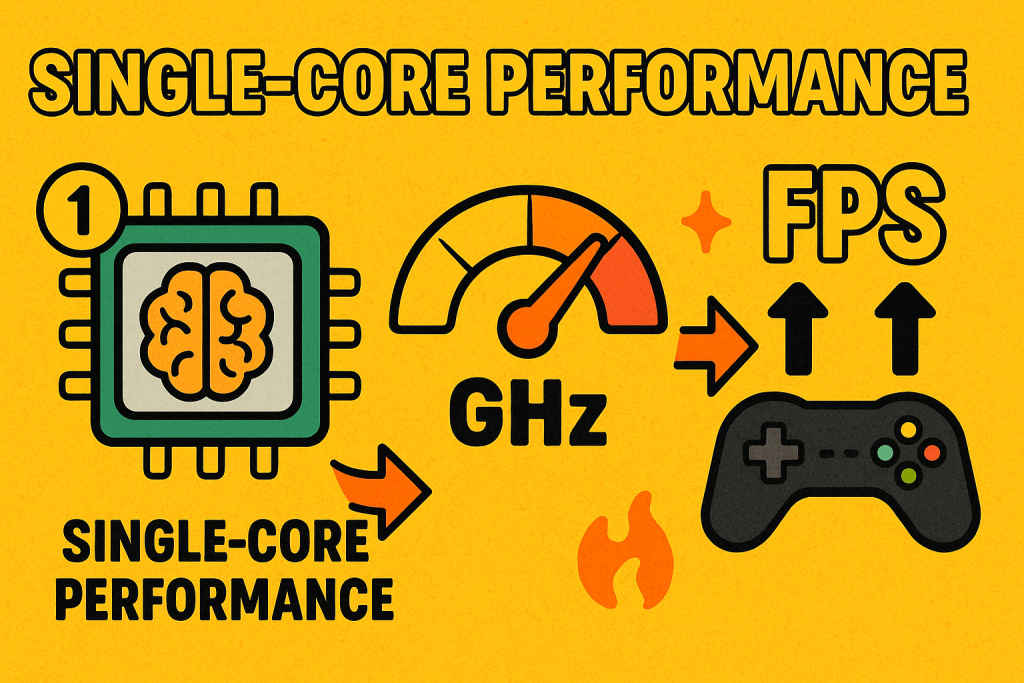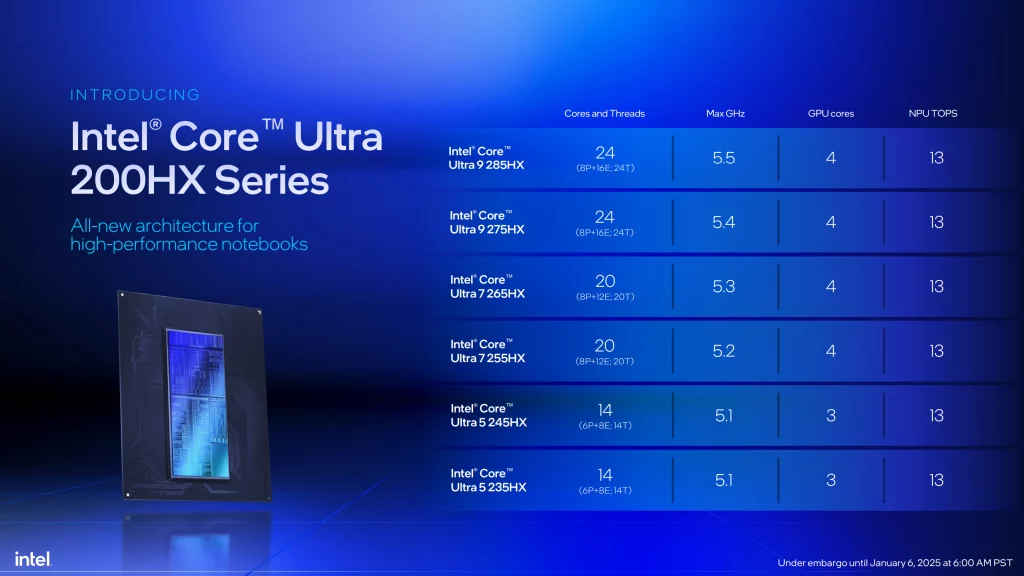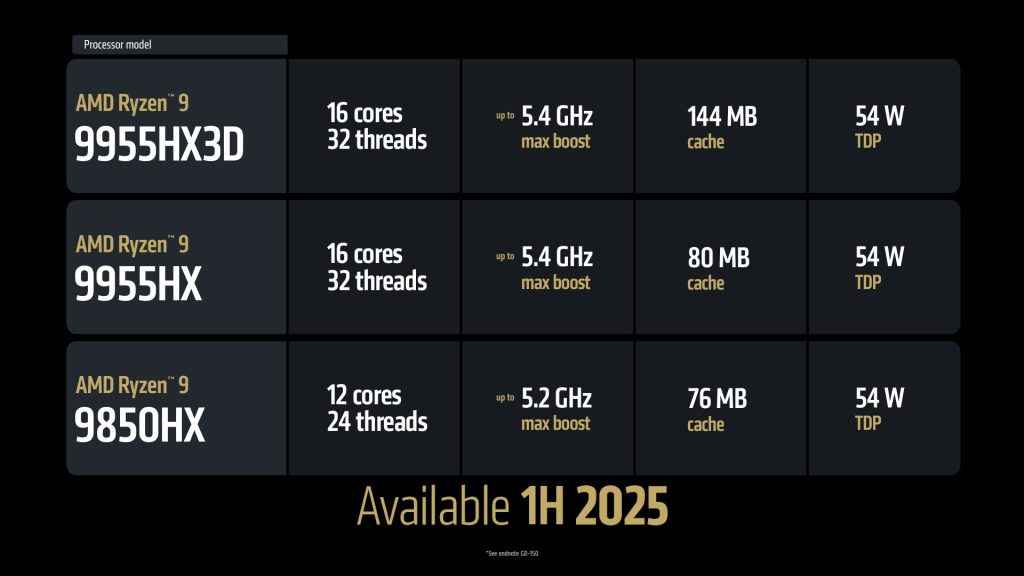
Which Laptop CPU Should Gamers Pick in 2025?
The battle for laptop gaming supremacy is fiercer than ever in 2025, with Intel and AMD releasing CPUs that promise desktop-like gaming experiences on the go. For serious gamers, choosing the right CPU can mean the difference between silky smooth gameplay and frustrating performance bottlenecks. While many focus exclusively on GPU specifications when shopping for a gaming laptop, the processor is the unsung hero that determines how well your system handles CPU-intensive games, manages background tasks, and futureproofs your investment. With both manufacturers releasing their most advanced mobile gaming architectures yet, let’s dive deep into the Intel vs AMD showdown to help you make an informed choice for your next gaming laptop.
What makes CPU choice critical for gaming
The processor serves as the brain of your gaming laptop, handling everything from physics calculations to artificial intelligence routines that power in-game enemies. Modern games increasingly demand more from your CPU, especially open-world titles and simulation games that need to track numerous objects and characters simultaneously.
Single-core performance remains crucial for gaming, as many game engines still heavily rely on single-threaded performance for critical operations. This is why clock speeds matter tremendously for gaming performance, with higher frequencies typically translating to better frame rates in CPU-bound scenarios.


Multiple cores have become increasingly important as well, especially for gamers who stream their gameplay or run other applications in the background. Additionally, cache size significantly impacts gaming performance by storing frequently accessed data close to the processor cores, reducing latency when retrieving crucial information during gameplay.
It is worth noting that while Qualcomm’s Snapdragon processors have made impressive strides in the laptop market, they are not currently focused on the gaming segment, with far fewer optimized titles and less robust development tools for game creators compared to x86 architecture chips from Intel and AMD so in this comparison, we have not included Snapdragon but it will be interesting to see their first gaming focused ARM based laptop.
Intel’s latest mobile gaming processors
Intel has made significant strides with its Core Ultra Series 2 processors launched at CES 2025. The flagship Intel Core Ultra 200HX series represents their most formidable mobile gaming silicon to date, featuring an innovative hybrid architecture that combines high performance cores with efficient cores.


The Core Ultra 9 275HX stands at the pinnacle of Intel’s mobile gaming offerings with up to 24 cores comprising eight Performance cores (P cores) and 16 Efficient cores (E cores). This architecture allows the processor to deliver impressive single-threaded performance for gaming while efficiently handling background tasks. The processor can reach boost clocks of up to 5.4 GHz, ensuring responsive gameplay across titles that favour high frequencies.
Intel has significantly improved its integrated graphics with the Intel Arc technology, featuring up to eight Xe cores with Intel Xe Matrix Extensions for AI acceleration. According to Intel’s internal benchmarks, the Core Ultra 200H series delivers up to 22% better gaming performance compared with previous generation H series processors. This improvement is particularly noticeable in competitive esports titles like Counter Strike 2, which thrive on high clock speeds and strong single-thread performance.
A major advancement for Intel is the inclusion of a Neural Processing Unit (NPU) in their gaming-focused chips for the first time. The Intel Core Ultra 200HX series processor includes a built in NPU capable of 13 trillion operations per second (TOPS), which can accelerate certain AI enhanced gaming features and background tasks without heavily taxing the main processing cores (we have not included the AI centric chips from Intel whichgoes upto 55 TOPS but most gaming laptops would benefits from more core counts which is present in chips such as 200HX).
Intel has also prioritised connectivity with the Core Ultra 200HX series, providing as many as 48 total PCIe lanes, ensuring ample bandwidth for high-speed storage and connectivity options that serious gamers require. The mobile platform also supports PCIe 5.0 and WiFi 7, future-proofing the system for upcoming peripherals and networking standards.
AMD Ryzen 9000 series for gamers
The flagship Ryzen 9 9955HX represents AMD’s premium gaming processor, featuring 16 cores and 32 threads based on the advanced Zen 4 architecture manufactured on a 5nm process.
What truly sets AMD apart in the gaming space is their 3D V Cache technology, which is now available in mobile chips like the Ryzen 9 9955HX3D. This technology stacks additional cache memory directly on top of the processor, dramatically increasing the L3 cache to an impressive 128 MB. The expanded cache provides significant performance benefits in gaming scenarios, where rapid access to game assets and instructions can directly translate to higher frame rates.


The standard Ryzen 9 9955HX already offers impressive specifications with boost clocks reaching 5.4 GHz, 16MB of L2 cache, and 64MB of L3 cache. This combination delivers excellent performance across a wide range of gaming titles, especially those that can leverage multiple cores effectively. AMD’s processors have particularly excelled in modern AAA titles like Elden Ring, Starfield, and Hogwarts Legacy, where the additional cache provides measurable frame rate advantages.
AMD’s mobile processors also support PCIe 5.0 for high-speed storage and connectivity, ensuring that gamers have access to the fastest SSDs and expansion options. The platform also supports DDR5 memory, providing ample bandwidth for memory-intensive gaming applications.
For content creators who also game, the Ryzen processors offer exceptional multi-threaded performance, making them ideal for streamers who need to run encoding software alongside their games or creators who edit video between gaming sessions.
Power draw and battery life under load
One of the most significant considerations for laptop gamers is power efficiency, which directly impacts both battery life and thermal performance. Here, the manufacturers have different approaches and strengths.
AMD has made remarkable strides in power efficiency with its 5nm manufacturing process. The Ryzen 7000 series mobile processors offer excellent performance per watt, with the Ryzen 7 variants capable of delivering up to 16 hours of battery life depending on usage scenarios. Under heavy gaming loads, AMD processors typically draw less power while maintaining competitive performance levels.
Also read: Tips and Tricks for Optimising Performance on your High-End Laptop
The Ryzen mobile processors feature sophisticated power management capabilities that allow them to scale performance based on thermal constraints and battery status. This results in more consistent performance during extended gaming sessions on battery power, which is crucial for gamers on the move.
Intel’s Core Ultra processors have improved efficiency compared to previous generations, but typically still consume more power under full load. The hybrid architecture with dedicated efficiency cores helps manage power consumption during lighter workloads, but when gaming, the performance cores can draw significant power. This often results in shorter battery life during intensive gaming sessions compared to equivalent AMD systems.
Intel has worked to mitigate this with improved power management algorithms and more efficient turbo boost implementations, but the raw performance often comes at the cost of higher power draw. In benchmarks, comparable Intel systems typically achieve 2 to 4 hours less battery life during mixed usage scenarios compared to AMD alternatives.
For gamers who prioritise maximum performance regardless of power consumption, Intel’s approach may be preferable. However, for those seeking a balance between gaming capability and battery endurance, AMD currently holds the advantage in most mobile implementations.
Thermal headroom and sustained performance
Closely related to power consumption is thermal performance, which directly affects how well a processor can maintain its peak performance over extended gaming sessions. Laptop cooling systems have limited capacity, making thermal efficiency a critical factor for mobile gaming processors.
AMD’s 7000 series mobile processors generally run cooler than comparable Intel offerings, thanks in part to their superior performance per watt metrics. This thermal advantage allows AMD processors to maintain higher sustained clock speeds during prolonged gaming sessions, especially in thinner laptop designs with more constrained cooling solutions.
Also read: The hidden pixels: How sub-pixel arrangements shape your high-refresh laptop experience
The thermal efficiency of AMD chips also translates to quieter operation, as laptop fans do not need to spin as aggressively to maintain safe operating temperatures. This can be a significant quality of life improvement during long gaming sessions, particularly for players using headsets.
Intel’s Core Ultra processors generate more heat under full load, which can lead to thermal throttling in inadequately cooled laptop designs. However, the latest generation has improved thermal characteristics compared to previous offerings. Intel has implemented more sophisticated thermal management algorithms that better distribute workloads between performance and efficiency cores based on temperature readings.
Many laptop manufacturers have adapted their cooling solutions to accommodate Intel’s thermal characteristics, with premium gaming laptops featuring more robust cooling systems specifically designed to handle the higher thermal output. When properly cooled, Intel processors can maintain their boost clocks for longer periods, delivering consistent gaming performance.
Also read: Latency vs. bandwidth: Why laptop Wi-Fi cards aren’t all equal
It is worth noting that thermal performance varies significantly between different laptop models using the same processors, as cooling solution design plays a major role in how well any CPU can perform under sustained loads. Generally speaking, thicker gaming laptops will handle either manufacturer’s chips more effectively than ultrathin designs.
AMD Ryzen 9 9955HX vs Intel Core Ultra 9 275HX: Head to head comparison
According to the Notebookcheck analysis comparing the AMD Ryzen 9 9955HX and Intel Core Ultra 9 275HX in identical hardware configurations, both processors demonstrate impressive gaming capabilities but with distinct performance characteristics.
The Ryzen 9 9955HX delivers exceptional multicore performance thanks to its 16 cores and 32 threads based on the Zen 4 architecture. In productivity benchmarks, it excels at content creation workloads like video rendering and 3D modelling, outperforming the Intel competitor by approximately 5 to 10% in heavily threaded applications.
Also read: The science of laptop audio: Engineering sound in limited spaces
The Intel Core Ultra 9 275HX leverages its hybrid architecture with 8 performance cores and 16 efficiency cores to deliver strong gaming performance, particularly in titles that do not scale well beyond 8 cores. Intel’s superior single-thread performance gives it an edge in certain gaming scenarios, especially older titles or competitive games that rely heavily on single-core speed.
In CPU-intensive games like Flight Simulator 2024, the Intel chip delivered approximately 3 to 5% higher average framerates at 1080p resolution. However, in games that can leverage more cores effectively, like modern open-world titles, the AMD processor closed the gap or even pulled slightly ahead in some scenarios.
The analysis revealed that Intel’s processor consumed approximately 25 to 30% more power under full load, resulting in higher operating temperatures and more aggressive fan behaviour in identically configured test systems. This led to the AMD-equipped laptop maintaining more consistent performance over extended gaming sessions as the Intel system occasionally had to throttle speeds to manage temperatures.
Also read: PCIe lane allocation: The silent bottleneck in modern laptops
Battery life testing showed the AMD system lasting approximately 20% longer during mixed workloads and about 15% longer during gaming workloads while operating on battery power. This significant difference makes the AMD option potentially more appealing for gamers who frequently play unplugged.
The Intel system demonstrated superior AI processing capabilities in specific workloads thanks to its dedicated NPU, though the practical benefits in current games remain limited, as few titles have fully leveraged these capabilities yet.
How to choose the perfect gaming CPU
Selecting the ideal processor for your gaming needs requires careful consideration of your specific usage patterns, budget constraints, and performance priorities. Here are some practical guidelines to help you make the right choice.
First, consider what types of games you play most frequently. If you primarily enjoy competitive esports titles like Counter Strike, Valorant, or League of Legends, Intel processors may offer slight advantages due to their superior single-thread performance. These games typically run at very high framerates and benefit from the fastest possible core speeds rather than multiple cores.
For enthusiasts who play demanding modern AAA titles like Cyberpunk 2077, Starfield, or graphically intensive open-world games, AMD processors with 3D V Cache technology offer compelling advantages. The larger cache size provides tangible benefits in these complex game environments, often resulting in smoother gameplay with fewer stutters and higher minimum framerates.
Battery life requirements should factor heavily into your decision. If you frequently game away from power outlets, AMD processors typically offer significantly better battery efficiency, often translating to 1 to 2 hours of additional gameplay. For those who almost always play plugged in, this advantage becomes less relevant.
Thermal constraints of your preferred laptop form factor matter tremendously. If you favour thin and light gaming laptops with limited cooling capacity, AMD processors generally maintain better performance in these constrained thermal environments. For bulkier gaming laptops with robust cooling solutions, either manufacturer’s chips can perform admirably.
Budget considerations cannot be ignored. AMD typically offers better performance per pound at most price points, particularly in the mid range segment. Intel often commands price premiums for their flagship offerings, though they do provide compelling options at various price points.
Ultimately, both manufacturers offer excellent mobile gaming processors in 2025, with the differences increasingly coming down to specific use cases rather than clear overall superiority. By carefully considering your particular gaming needs and priorities, you can select the processor that will deliver the best experience for your unique situation.
This article is part of our comprehensive “Gaming laptops series” exploring the key factors that define today’s high-performance portable gaming machines.
Source: Which Laptop CPU Should Gamers Pick in 2025?



